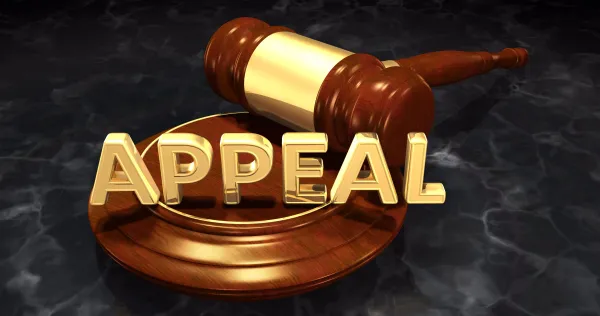Otolaryngology Coding Alert
Go Old School To Submit Office Notes for -25 Claims
See what extra hoops you’ll have to jump through for Cigna claims come May. There is now an end in sight to the pause in the implementation of a major payer’s policy that would result in a significant unnecessary administrative burden and compliance cost to practices, much to the chagrin of physicians and advocacy groups. Context: Cigna announced it is moving forward with its policy to require you to submit medical records with all established patient evaluation and management (E/M) claims submitted with CPT® codes 99212-99215 (Office or other outpatient visit for the evaluation and management of an established patient …) and modifier 25 (Significant, separately identifiable evaluation and management service by the same physician … on the same day of the procedure or other service) when you also code and bill a minor procedure. Failure to submit records will result in a denial of the E/M service when this updated modifier 25 reimbursement policy takes effect nationwide on May 25, 2023. Keep reading for a breakdown of this policy, key considerations, and actions otolaryngology practices can take to ensure your physicians aren’t penalized when using the modifier appropriately. But first, let’s review the basics behind the use of modifier 25. Refresh Your Modifier 25 Understanding Often a patient’s “Oh, by the way …” comment turns an encounter that was scheduled as a minor office surgery into something more involved. For example, suppose a patient is coming in to see your otolaryngologist for a postoperative sinus debridement, coded to 31237 (Nasal/sinus endoscopy, surgical; with biopsy, polypectomy or debridement (separate procedure)), and during the visit, brings up a new complaint of ear pain. In cases like this, when providers address a problem at the time of another service/ procedure and the patient’s condition requires work above and beyond the other service provided or the usual care associated with the procedure performed, you must report the separate E/M with modifier 25 appended to get paid for both services. Keep in mind: All billable minor procedures (0-day or 10-day global period) already include an inherent small E/M component to gauge the patient’s overall health and the medical appropriateness of the service. Since the decision to perform a minor procedure is included in the payment — the relative value unit (RVU) includes pre-service work, intra-service time, and post-procedure time — an E/M service should not be reported separately. Before you go reaching for modifier 25, make sure you’re using it because your otolaryngologist performed a minor procedure or other service and a separate and significant E/M service: The key is recognizing when the additional E/M work is “significant” and, therefore, additionally billable. Determine Appropriate Use Typically, if the E/M service is unrelated to the minor procedure (i.e., for a different concern/complaint), the E/M may be reported separately. Additionally, if the E/M service occurs due to exacerbation of an existing condition or other change in the patient’s status, that service may be reported separately if it is independently supported by documentation. Bottom line: The E/M service must be significant, the documentation must substantiate this, and the physician’s work must be medically necessary. Note, a different diagnosis code is not needed, and in some cases, the diagnosis code for the E/M code and the procedure code will be the same. Justify Modifier 25 As with all matters of provider service billing, it’s crucial that the medical record conveys the necessity and justification for services performed. Particularly with modifier 25, clear, detailed physician documentation is key to showing their thought process and supporting the medical decision making (MDM) involved during the course of the treatment rendered. Payment hinges on the provider appropriately and sufficiently documenting both the medically necessary E/M service and the minor procedure in the patient’s medical record to support the claim for these services. Tip: While you don’t need separate notes, physically separating the documentation for the E/M service from documentation for any other same-day procedure or service may help. Make sure your providers show their extra cognitive work, as it will serve a critical role when the payer reviews the claim. Unfortunately, for patients insured by Cigna, you’ll have to jump through a few more hoops to submit the documentation for modifier 25 claims. See the Specifics of Cigna’s Updated Modifier 25 Policy Restrictions surrounding how you must send in the supporting documentation make the already arduous claims submission process even more cumbersome. Starting May 25, you must submit the required office notes via a dedicated fax number, 833-462-1360, or to Modifier25MedicalRecords@Cigna.com. You should continue to submit claims electronically — making sure you have the attachment indicator selected — or via mail. When submitting required office notes to Cigna via fax or encrypted email, you should include a cover sheet with the following information: Do this: If you send the required documentation via email, safeguard protected health information (PHI) by encrypting the email. Email encryption is essentially mixing up the contents of an email, so it becomes a puzzle that only you and the intended recipients have the key to solve. Although the cost of some encrypted email systems can reach into the thousands of dollars, it is possible to find systems where the cost of a yearly subscription to an email encryption service is as low as $99 for a single user, which does not add significant costs to the practice, notes Barbara J. Cobuzzi, MBA, CPC, COC, CPC-P, CPC-I, CENTC, CPCO, AAPC Fellow, of CRN Healthcare Solutions in Tinton Falls, New Jersey. Watch for Delayed Payment Remember to mark your calendar when submitting these claims and documentation because if Cigna fails to remit payment within the state’s mandated prompt payment time frame, you can file a complaint to hold them accountable to prompt payment laws. Make sure you know what your state’s laws require. For example, California law mandates penalties and interest when payers fail to pay a medical-legal bill after 60 calendar days. Texas Insurance Code, however, requires payment of health claims no later than the 45th day after the date a non-electronic clean claim is received, and no later than the 30th day after an electronic clean claim is received. Don’t let Cigna’s policy disincentivize your physicians from providing efficient, medically necessary — although unscheduled — care to Cigna enrollees. As long as providers are not being too aggressive in billing an E/M with a minor procedure and they provide clear documentation that supports a significant and separately identifiable E/M, Cigna should reimburse accordingly. And if they don’t, appeal. Hear What the Industry Has to Say The American Medical Association and state and specialty societies have significant concerns with this policy. The California Medical Association (CMA) sent a letter to Cigna outlining its concerns, urging the payer to rescind the policy. “This policy will impose an estimated cost of $3.29/per claim to produce the record and fax to Cigna, which will result in a net payment reduction. … This is a complete waste of health care dollars and practice time that would be better spent providing care to patients,” said CMA President Robert E. Wailes, MD, in the opposition letter.

Related Articles
Otolaryngology Coding Alert
- News You Can Use:
Go Old School To Submit Office Notes for -25 Claims
See what extra hoops you’ll have to jump through for Cigna claims come May. There [...] - Coding Quiz:
Size Up Your ENT Coding Skills
Test your knowledge of these four common ENT problems. In some cases, coding for otolaryngology [...] - CPT® Coding:
Let Site and Extent Direct Tongue Procedure Coding
Remember to check for closure following excision or risk forfeiting pay. When your otolaryngologist performs [...] - Coding Quiz Answers:
Check Your Responses to Our ENT Coding Quiz
Grab your answers and see if you really are an ENT coding expert. Once you’ve [...] - You Be the Coder:
Have a Go at This Glossectomy Case
Question: I am struggling with the following case, specifically whether to report the procedures separately. What [...] - Reader Questions:
Avoid Misuse of Modifier 25 With This Advice
Question: We worry about using modifier 25 incorrectly. Can you explain key considerations and provide tips [...] - Reader Questions:
Assess Your Mastery of Assigning Audiometry Codes
Question: How should I code the testing done in the following encounter? A 5-year-old patient is [...] - Reader Questions:
Spot the Lingual Lesion Excision Billing Blunder
Question: The otolaryngologist excises a tongue lesion on the lateral border of the posterior third of [...]




